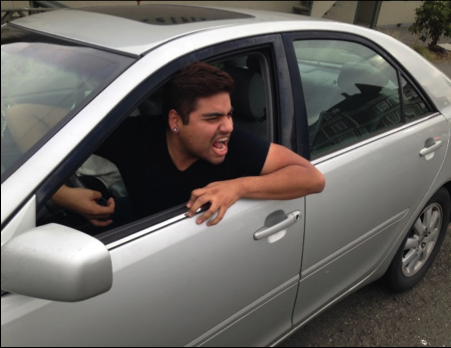
Self-driving cars have reached a roadblock and stumped by erratic human drivers. To correct this, there have to be adjustments for improving how they interact.
We are now living in the future, and cars are driving themselves without a human behind the wheel. Though this technology is not yet at level 4, we are seeing great improvements already. Now, the question is whether self-driving cars can deal with the greatest obstacle of all. It is the erratic human behind the wheel of the other car.
Self-driving cars like Waymo and other startups used advanced Lidar, cameras, and GPS to navigate the roads. These robot cars follow the speed limit and make sure all traffic rules are followed which is the ideal situation for self-drive cars to operate in - a totally regular and predictable manner without confusion. However, most accidents involving smart cars are caused by the nut behind the other wheel - all because the driver of the other car is not careful, compared to the robo-car.
The major concern for achieving full driving autonomy is quite simple, how to avoid accidents caused by human error. Experts on machine learning at MIT and Delft University are hot on a solution to achieve just that. Achieving the best adaptation for self-driving cars with a formula that combines sociology and psychology that is similar to number equations that conditions robo-cars how to react. Managing the interaction of robo-cars and human drivers are one of the major obstacles to hurdle. The solution for them lies in how the machine processes the solutions fast.
Places that have them running about, the dynamics of the interactions are crucial to the Success of rob0-cars. Driverless cars have inherent advantages but the road to getting there is not so easy.
Read: Are You Ready for Waymo and its Autonomous Cars? Here's Everything You Need to Know!
Specific problems that driverless cars have to deal with, when sharing the road with other cars.
a) Self-driving cars are not as chaotic as human-driven cars.
One of the biggest differences that are major is that robocars are passive and just do what they do. Human drivers, on the other hand, are not so much. Behind the wheel of a normal car is a person who drives differently from others. As opposed to a robocar, which just follows road rules and does not do things randomly. It would be easier if humans needed to adjust to self-driving cars, but it should be the way around. For
b) Autonomous cars need accurate models to be more effective
Researchers are hard at work to devise ways of machine learning to adapt and interact with other vehicles on the road. Compared to AI, people are better suited to driving and adjust fast. The problem with AI is how to think like a human and act like one behind the wheel. To account for the chaotic nature of car traffic that they have to operate in.
c). The human-machine relationship is complicated and needs more adjustment.
Like in a Sci-fi there is always gristle in the bits when robots and humans are concerned. This is exactly what is happening when human drivers deal with robo-cars. There will be an adjustment period to deal with, it is not so easy. People need to learn to co-exist with self-driving cars, also adjust the way they drive too.
In time, self-driving cars will learn but not yet with all the considerations stacked up. Change is inevitable and we live in the future, that we cannot change but move forward.
Related Article: Teaching Self-Driving Cars to Watch for Unpredictable Humans
See Now: OnePlus 6: How Different Will It Be From OnePlus 5?



























